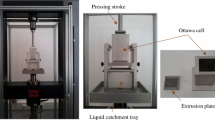Abstract
The effects of fermentation time and temperature of grape pomace on the number of bacteria and yeasts were assessed using ANOVA of experimentally generated data, as well as analysis of models derived from first principles and fitted by non-linear regression to such data. Specific rates of death of yeasts and bacteria were experimentally obtained at different fermentation times (pilot scale), and at different fermentation times and different temperatures (laboratory scale) for pomace of Alvarinho and Loureiro grape varieties obtained after vinification at two different locations. Viable numbers of yeasts and bacteria in grape pomace were high, especially in the first 3 week of fermentation; for bacteria, there was an increase of their levels during the first 3 week, followed by a significant decrease towards 9 week; for yeasts there was a monotonic decrease throughout such whole period. The numbers of viable microorganisms were mathematically correlated with time and temperature for both wineries using mechanistic models and following a methodology of increasing model complexity. After having checked the validity of underlying assumptions of normal distribution and constant variance of residuals of the experimental data, determination of the best nested model was based on an F-test; such model considered that the behavior of the microbial population is well described by a constant specific growth rate and an increasing specific death rate, both of which vary with temperature following Arrhenius relationships. Activation energies for the specific death rates of yeasts and bacteria were (1.469–1.560)×104 and (2.584–4.152)×104 cal/mol, respectively, for the temperature range 20–35 ∘C. Prediction of the time profile of viable numbers of the major families in the adventitious microflora of grape pomace, as a function of fermentation parameters that are easily manipulated is important in attempts to eventually standardize this solid-state, ill-defined fermentation and so eventually optimize the manufacture of marcs obtained by steam distillation of such fermented pomaces.
Similar content being viewed by others
Author information
Authors and Affiliations
Additional information
Received: 28 June 1999
Rights and permissions
About this article
Cite this article
Silva, M., Malcata, F. Effect of time and temperature of fermentation on the microflora of grape pomace. Bioprocess Engineering 23, 17–24 (2000). https://doi.org/10.1007/s004499900114
Issue Date:
DOI: https://doi.org/10.1007/s004499900114




